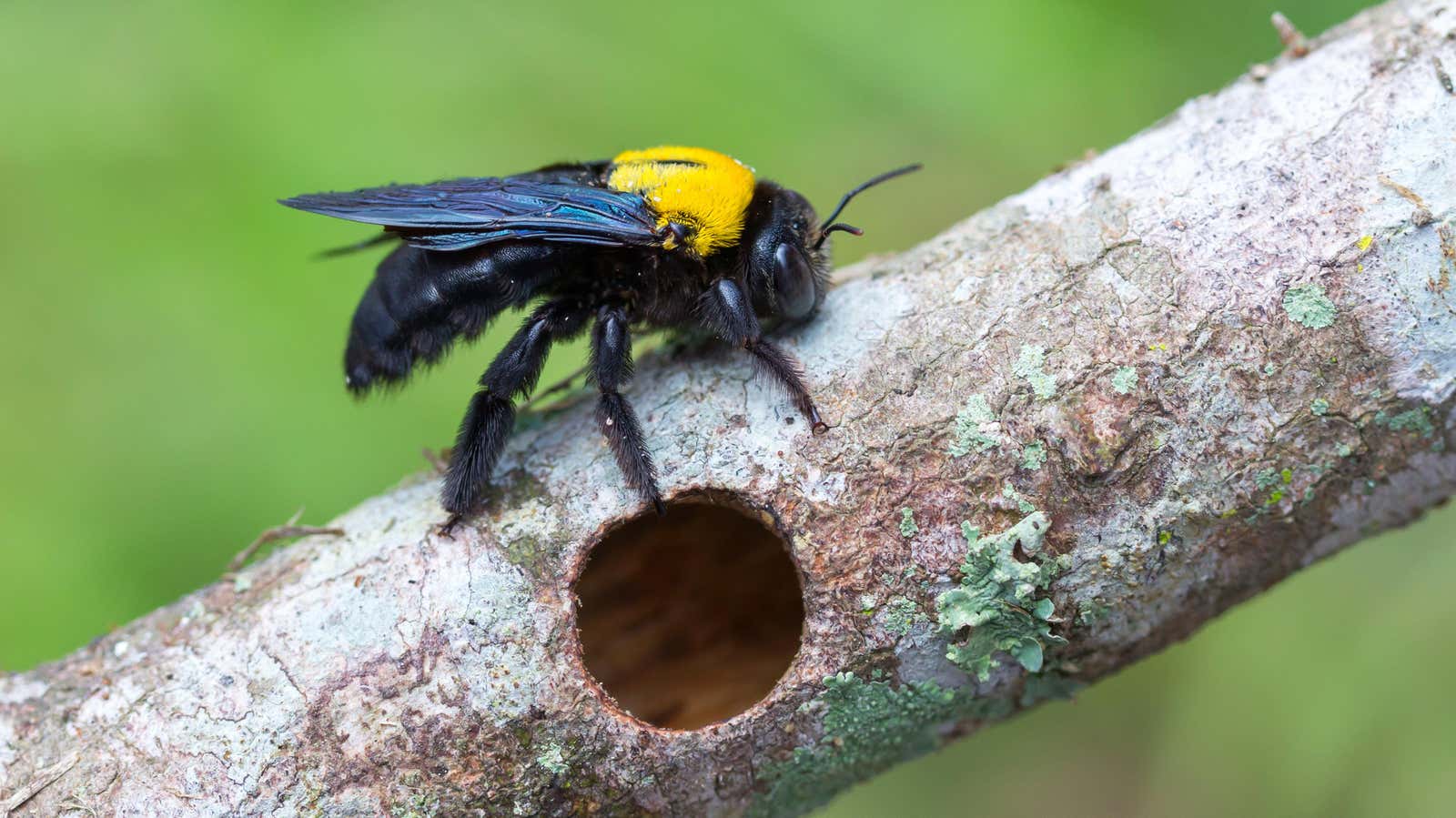How to Get Carpenter Bees Out of Your Yard Without Killing Them

Bees may be small in size, but they play an important role in ecosystems by pollinating trees, flowers, and other plants. But one species of bee doesn’t just pollinate: the carpenter bees.
Unlike bumblebees or honey bees, carpenter bees do not live in colonies. Instead, they tunnel into the wood, creating a nest (which looks like a small circular hole) to lay eggs, according to Dr. Michael F. Potter, an entomologist at the University of Kentucky’s College of Agriculture, Food and Environment .
And sometimes the wood they choose for their nest turns out to be part of people’s homes. If you find that carpenter bees are at home in your home, you can encourage them to nest elsewhere without harming them and, in turn, the local ecosystem. Here’s how to do it.
What you need to know about carpenter bees
Carpenter bees are large, black and very similar to bumblebees . The difference is that carpenter bees usually have a shiny, hairless belly, while bumblebees have a hairy belly with black and yellow stripes.
When it comes to finding a place to nest, carpenter bees gravitate towards unpainted, weathered wood, especially the softer varieties such as mahogany, cedar, cypress and pine, Potter notes . So when they decide to move into your home, they prefer places like cornices, rafters, cladding boards, siding, wood roofs, decking, and outdoor furniture.
While carpenter bees usually do not cause as much damage as termites, they can cause both cosmetic and structural damage, Potter explains :
Carpenter bees dig new tunnels in the wood to lay eggs or expand and reuse old ones. Significant damage can be done if the same pieces of wood become infected year after year. Holes in the wood surface also promote moisture ingress, rotting and decay.
For the most part, carpenter bees are not fond of painted wood. So, painting any raw wood surfaces in your home can prevent them from creating nests in the first place.
How to Safely Get Rid of Carpenter Bees
If the carpenter bees have already made your home their home, there are several ways to encourage them to move around without harming the little pollinators. Here are some of them, mentioned in Julia Rittenberg’s Popular Science article :
- “Apply a drop of almond or citrus oil to the nests of carpentry bees,” said Nick Hefley, a beekeeper at Astor Apiaries in Queens, New York. They are not fans of these scents and will probably want to move and find another place to sleep. After they have moved out, fill the holes with wood putty or steel wool.
- Hang up the bells. According to Hefley, carpenter bees hate their sound, so constant noise can drive them away.
- Leave a few ramshackle, untreated wood planks that you no longer need outdoors – but far enough from your home – for the carpenter bees to have alternative housing.